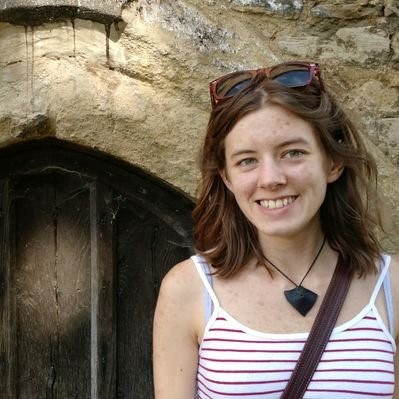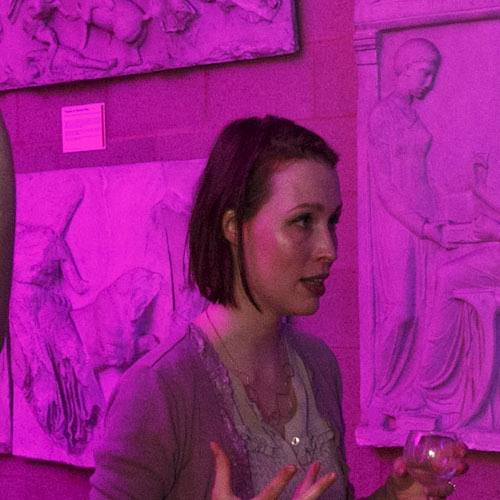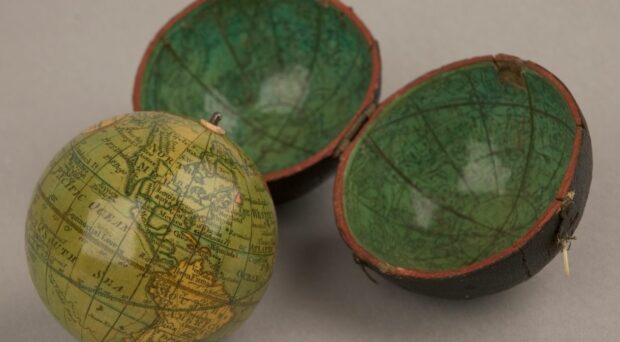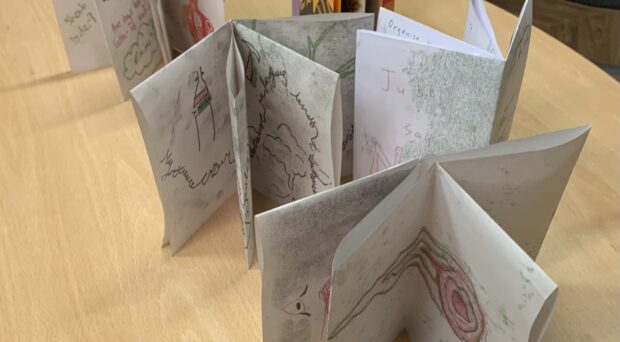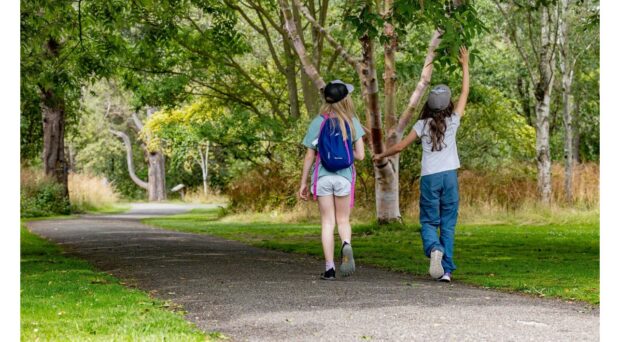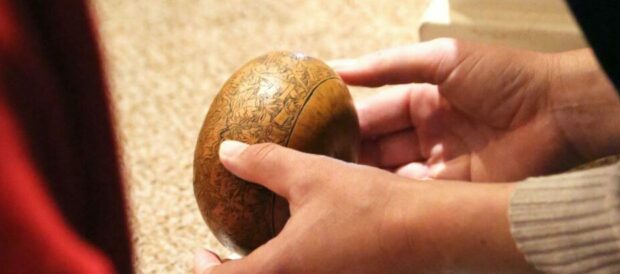In February 2020, the Museum of Classical Archaeology (MOCA) installed an exhibition with an unusual origin. The artworks had been created in just two days.
To find out why, we need to go back to September 2019, when MOCA, along with four other University of Cambridge Museums (UCM) invited museum activists, students, volunteers and artists to take part in Museum Remix, a two-day workshop exploring LGBTQ+ (lesbian, gay, bisexual, trans, queer/questioning) histories. Led by Luis Jimenez, volunteer tour guide on the UCM’s Bridging Binaries LGBTQ+ tour programme, Lily Stancliffe, Suzy Rickard, Jack Silvester and Lizzie Knott worked together to create new artworks and interpretation inspired by MOCA’s collection. After the workshop they worked with MOCA’s Curator, Susanne Turner, to install their works in the museum’s Cast Gallery.
In this post, the team and Susanne reflect on their experience.
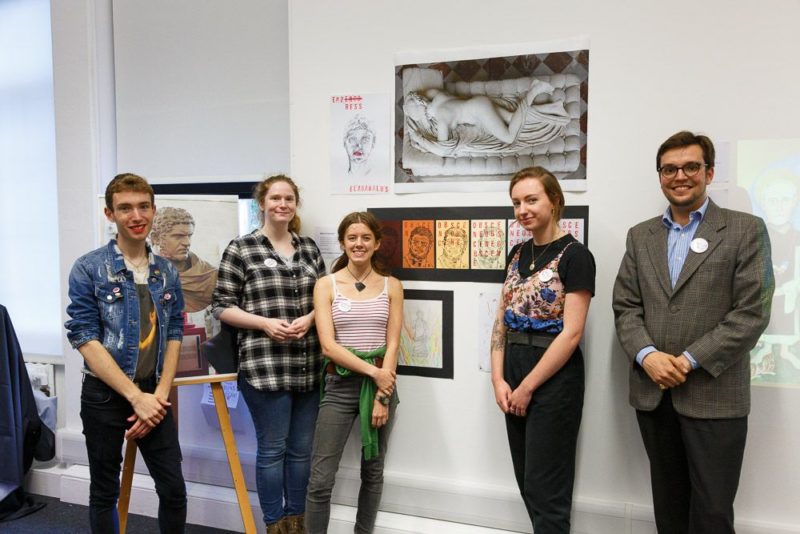
Susanne to the team: How do you think working with MOCA shaped your experience of the UCM’s Museum Remix programme?
Lily: Working with a museum that was keen to listen to us, and was invested in finding real ways to diversify was really empowering. I felt seen and heard for the first time in a long while. I was really used to the narrative that classical sculpture was all homoerotic and I was prepared for uncomfortable conversations about pederasty. It was really humbling to learn that there was (obviously) so much more to the story. I was shocked that I had made so many assumptions about the classical world in general, when I strive so hard to see individuals in my own work.
The story of Elagabalus (the young emperor who dressed in women’s clothing and loved to be called mistress) stuck with me particularly. The sources we read were describing a disastrous and disrespectful leader, but they also reveal an individual who was battling with ideas that are still hard for most of us to understand. The experience reminded me of why I love studying the past, that everywhere you look there are people working out how to make sense of the world. I like to imagine them stopped mid-sentence, explaining the findings of their lifetimes, ready for you to try and finish the story.
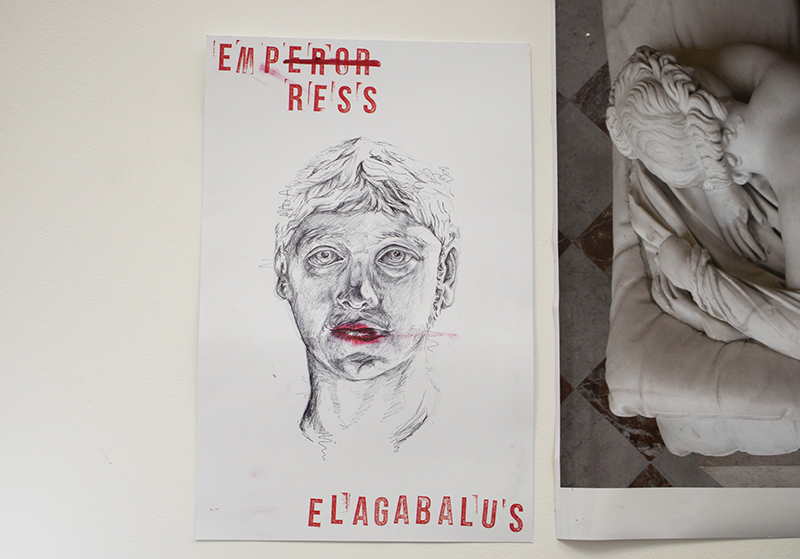
Susanne to the team: What were the highs and lows of your experience of the Remix process?
Lizzie: I found it interesting being able to approach this with a diverse group of people, from varying academic backgrounds and ways of identifying. Within our group of five, we were able to offer different insights, covering all bases and sparking important conversations along the way which all contributed towards our final outcomes. This was a high for me, as I was able to learn a lot and it really questioned my approach to curating, especially on such an important topic. Although, as the ‘artist’ of the group, I did feel much more comfortable when it came to approaching how we would visually communicate as a group, as opposed to writing the labels for example. However, by the end of the process I was able to view myself as a rightfully important member of the group and just swooned over my groups’ label-writing abilities! Another high would have to be knowing how much of an impact we are making. These stories are so incredibly important and being able to finally tell them and give the visitors of the MOCA an insight into the LGBTQ+ histories that are scattered across different pieces of the museum feels very rewarding.
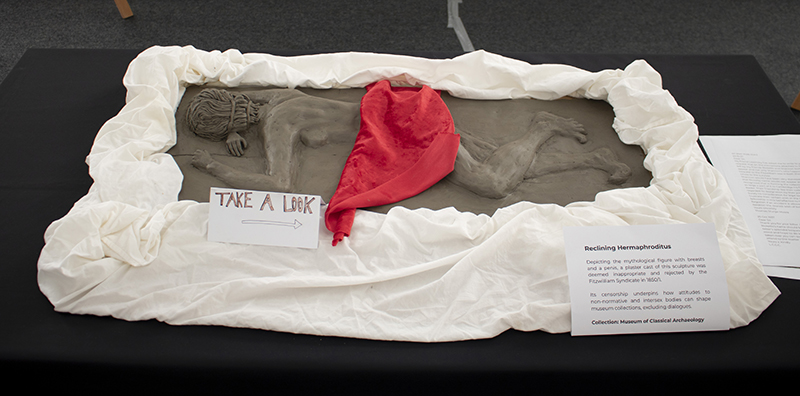
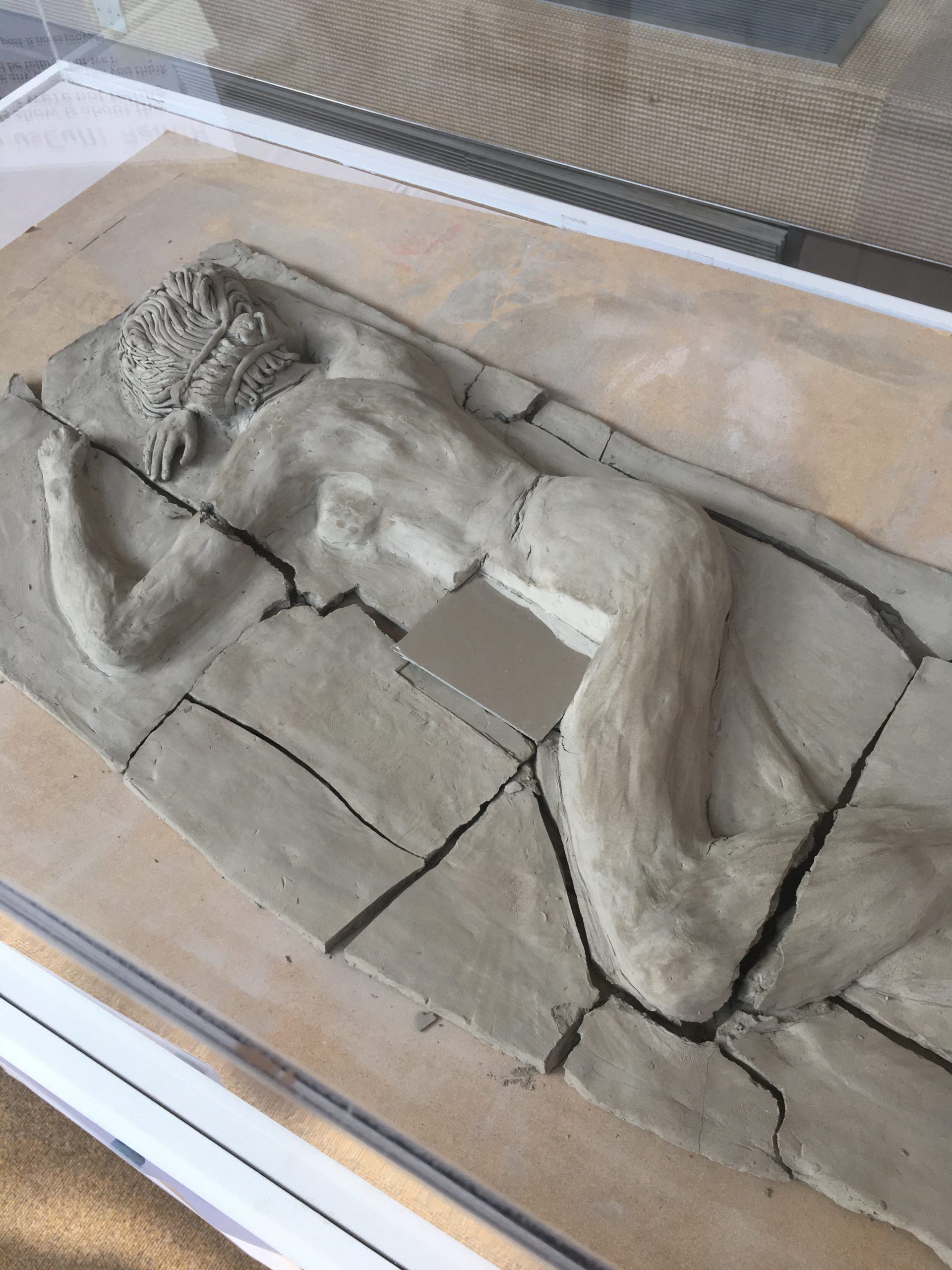
Suzy: I came to the project hoping for the opportunity to represent myself even if in a small way, and being able to produce something for the pop-up exhibit was a definite high point and a personal achievement for me. An unexpected highlight was discovering through the Bridging Binaries tour at MoCA that that representation was there too – it made me feel inspired and happy. While I wouldn’t call it a low point per se, coming to appreciate just how much important information gets cut out when writing labels made me feel a little disheartened by the limitations of the museum context. But that is why incredible programs like the Museum Remix exist, and through it hopefully we can find new ways to share histories as diverse and detailed as possible.
Susanne to the team: The Remix was originally intended to result in just a one-off, single-night exhibition. What did it mean to you to build something more permanent with MOCA?
Lizzie: The first night of the Museum Remix where we exhibited alongside the other groups was very rewarding. There was such a buzz and a lot of important conversations were being had about ours and our peers’ work, which is exactly what we wanted. However, when we got the email from Susanne asking us whether we wanted to exhibit our work more permanently within the MOCA, we were all so excited! Our work had been recognised and knowing that Susanne believed in our vision and intention felt brilliant. We were able to reach more people through our permanent display, open up a broader discussion and make waves within the MOCA itself. We also got to work more with Susanne as well which taught us a lot about the process of curating, what to be careful of and how to be as effective as possible in our approach. We have been able to create conversation and alter perceptions towards LGBTQ+ history which is all we could have asked for when entering this process.
Luis: I am genuinely not sure what I was expecting. I hoped that people would leave the space that we created being more aware of the diversity we wanted to communicate. The responses we’ve had make me think that our installation was effective, the visitors showed interest in it and it gathers people for conversations. Feedback has been incredibly useful to help us improve and supportive of our efforts so far. The only negative comment we had made me realise how much dialogue is needed, and how important it is to make space for it in museums.
Susanne to the team: Writing labels is hard! How did you find the process, and what did you learn along the way?
Lily: I love writing labels; the process of researching objects and then trying to capture hundreds of perspectives and interpretations as well as all the facts is the challenge that keeps museums alive. Labels can always be better: more concise, more representative, more accessible. Being able to start from scratch and without a lot of the usual constraints allowed us to really explore the untold stories of the objects we were working with. It also helped me to understand why those stories struggle to make it onto permanent museum labels. The language around LGBTQ+ stories has been grown so organically and shaped by so much misunderstanding and fear that choosing your words (even as LGBTQ+ individuals) is a daunting task. Assigning pronouns for Elagabalus was particularly frustrating- it’s not something we normally do for other people. We have no idea what Elagabalus would have chosen in their own time or what would best represent how they would have viewed themselves now. Negotiating historical sources whilst writing for modern audiences requires a great deal of introspection as well as sensitivity.
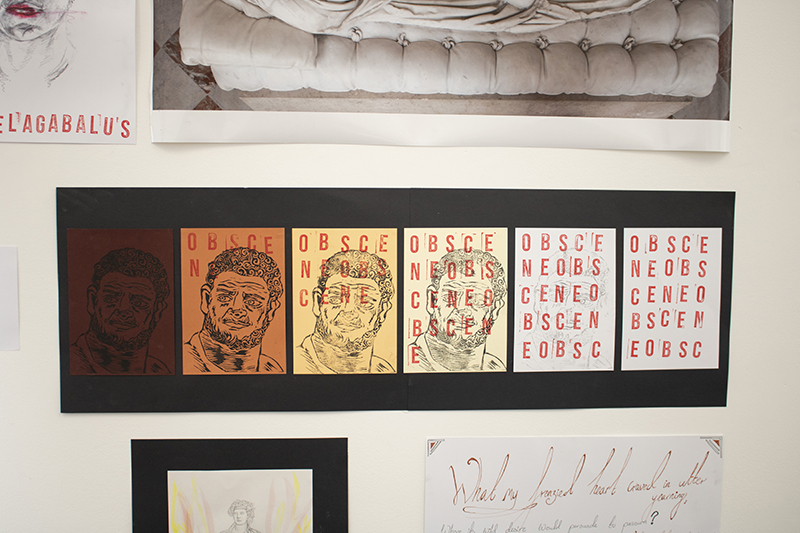
Jack: Having already explored the process label writing to some extent as part of my art history degree I knew it was going to be hard, but given how we actually had more space than I expected I was surprised at how hard it was to fit all the information we wanted to include! To an extent it made me understand why some museums might cut out details about sexuality and gender identity for the sake of brevity, but it also made me realise that when you actually treat those ideas as central it changes the whole way you approach the writing process! And it’s proof that you can present these narratives in an interesting way without maligning other key historical facts, and that by actively choosing to ignore them museums are really missing out on the opportunity to mine some really rich, rewarding and relevant material!
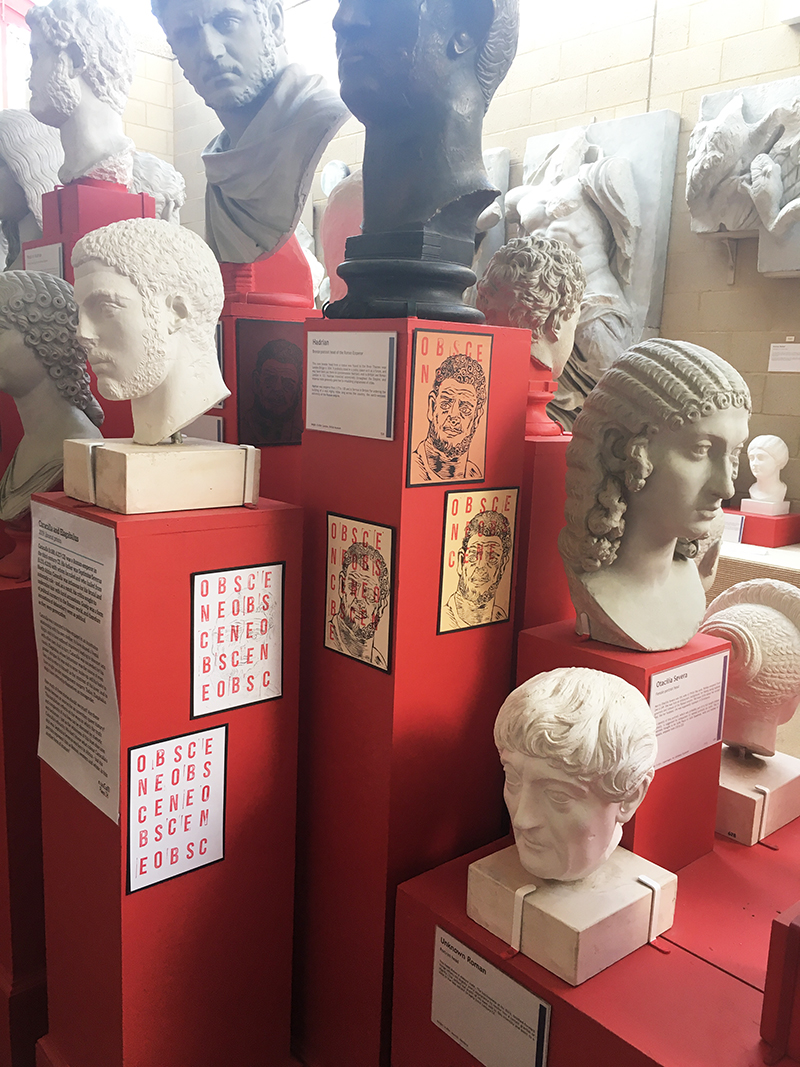
Susanne to the team: Taking part in Museum Remix has definitely made you bona fide Museum Activists. Where do you want to go from here and what do you think the legacy of the Museum Remix should be?
Luis: The more I got involved in the project, the more I realized how many blind spots I have in my knowledge. The Bridging Binaries tour and the Remix haven’t just taught me about LGBT+ issues but also have been able to reach issues surrounding race or the limitations of both ancient and modern languages when talking about gender. I hope the next Remix can reach some of those stories or other ones that we got from the feedback. I most definitely hope to have more interaction with the visitors.
Lily: The experience taught me that I shouldn’t be afraid of searching for the stories that are missing from museum narratives, that being accused of ‘making everything gay’ isn’t a reason to stop pushing for representation and diversity in our cultural heritage. I’m hoping that I can carry that learning with me through my work and in the rest of my life.
Suzy: Being part of this amazing Remix team has taught me not to feel daunted when approaching difficult subjects, and that listening to other people’s stories (whether they happened today or 100s of years ago!) can help you to understand the world in ways not always easily accessible in modern media.
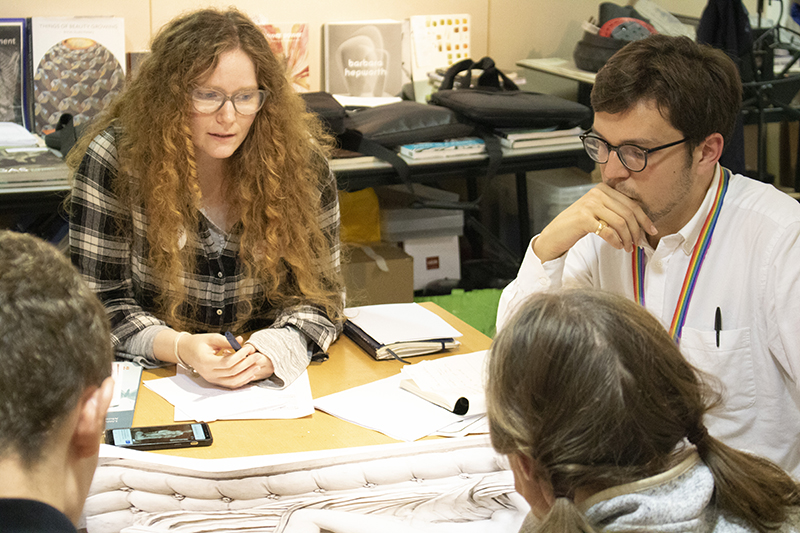
Lizzie: As a creative, the Museum Remix has inspired me to channel a wider range of under-represented topics in my work. It wasn’t until I embarked on the Museum Remix that I realised just how many stories haven’t been told. It is our job as ‘museum activists’ to bring these tales to light and represent what is on display correctly. Particularly when it comes to LGBTQ+ histories, these can really inspire visitors, particularly those within the community or who know people who are (which is pretty much everyone). I’m very excited to continue to voice more stories through my own work and I hope to work with my Remix team on other projects like this in the future too, they’re a wonderful bunch.
Team to Susanne: What kinds of reactions to our installation were you expecting and how have people responded in reality?
Susanne: We were, broadly speaking, expecting generally positive reactions. That’s mainly because we’ve been lucky to have very little negativity in reaction to either our Queer Antiquities trail or the Bridging Binaries tours. Any resistance which is expressed tends to be done so in quite measured terms. In the case of the Remix display, we added an interactive element, where people could respond and let us know what other unseen narratives they would like to see us tackling. It’s been generally positive, with some great comments and suggestions (although I have been genuinely surprised that no one has raised race and ethnicity as an issue…). We had one response which we might class as homophobic – but after a little bit of thought (and consultation with the Remix team and others) we decided to leave it in place and treat it as a teaching moment by writing a light-hearted but pointed response. I hope that was the right thing to do – I think it was, because our role isn’t to silence anyone but we also are not here to invite or platform harmful reactions.
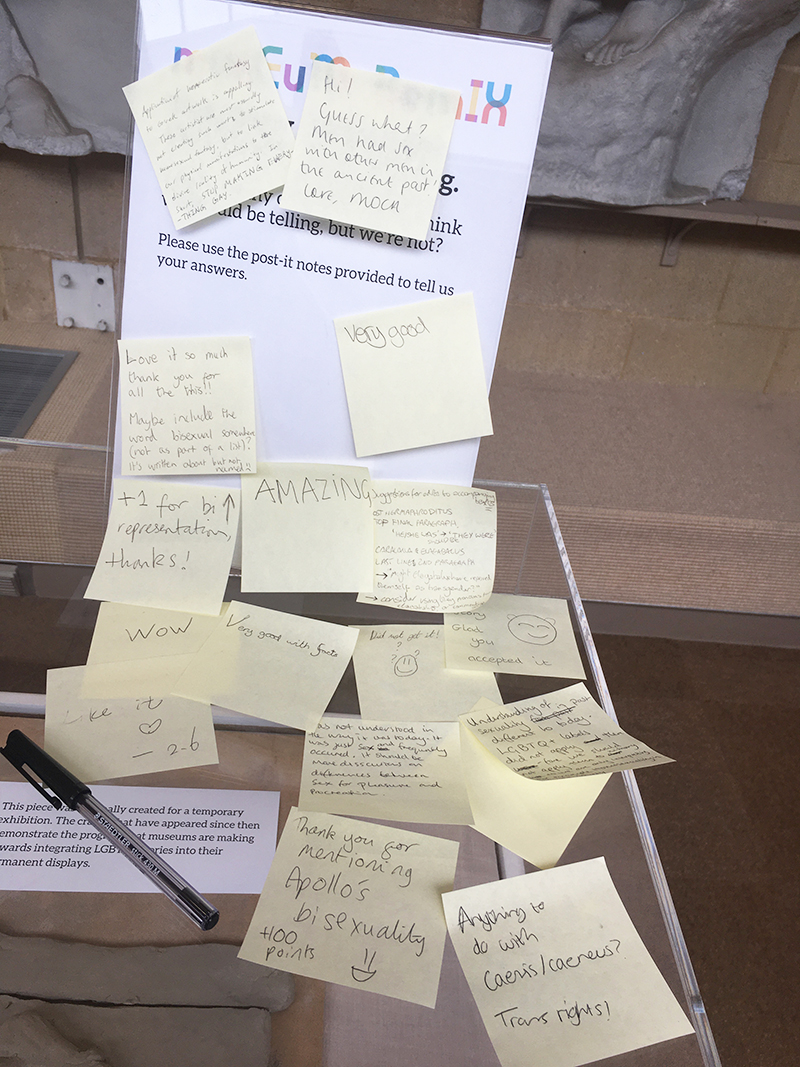
How can museums find a balance between the pressure to have a broad appeal and the responsibility to challenge views and promote conversations?
Susanne: Although it might seem like there’s tension between ‘broad appeal’ and ‘diversity’, I’ll be honest: I’m not sure there is. It’s our job – as curators, as educators, as museum professionals – to make our collections relevant to our audiences. We have to give our visitors a reason to visit, and we also need to make sure we’re not wedded to traditional interpretative frameworks just for the sake of it (even if it’s hard to rewrite all our labels…!). On the face of it, it might seem nigh on impossible to argue that there’s any relevance to modern life in a collection of copies representing objects made by people 2,500 years ago – why would there be? But once you listen to a Bridging Binaries tour guide articulate how much it means to be able to use those objects to demonstrate that homosexuality has a history, that all the things they were told growing up aren’t true – it’s humbling. I’m the first person to say we have a responsibility, as a university collection, to commit to providing rigorous and reliable interpretation – but we also have a responsibility to use our skills not for gatekeeping, but for creating safe and diverse spaces. We can do both. They aren’t mutually exclusive. And even better, we all gain and learn more from the process as we go.

Whose story do you want to tell next? What are your hopes for the next Remix?
Susanne: We’ve been tackling LGBTQ+ representation for a while now – we created our Queer Antiquities trail in 2018, in 2019 we launched the volunteer-led Bridging Binaries tours through the UCM, and this year we brought the Museum Remix display into our space. That’s not to say our work here is done – far from it, and we’re excited about where we can continue to showcase LGBTQ and Queer interpretation or projects. But it’s time now that we turn to broadening the stories we tell in different directions. In particular, we’ve got our eyes set on race and ethnicity (or, rather, their apparent invisibility or ‘unmarkedness’ in our collection) for our next project: we have a gallery which is full of whiteness and we want to interrogate that – and, frankly, be more honest about it. As for my hopes for the next Remix: I hope we can use it to build something bigger than our initial intention, just as we have done this year. I don’t know what form it will take and I don’t know who it will involve. But I do know it’s a two-way process, and MOCA will gain as much as the Remixers do.


